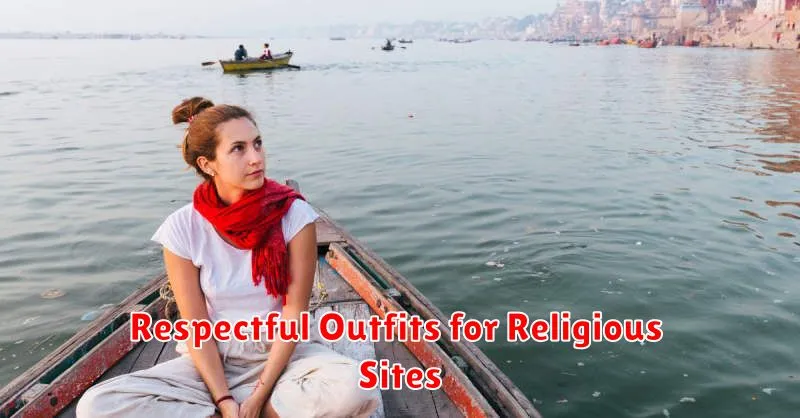Navigating the globe often involves more than just booking flights and accommodations. Understanding cultural dress codes is paramount for showing respect and seamlessly integrating into different societies. Whether you’re embarking on a business trip, exploring ancient ruins, or simply immersing yourself in a new culture, knowing what to wear is crucial. This article will delve into the nuances of cultural dress codes across various countries, offering valuable insights to help you prepare for your travels and avoid unintentional cultural faux pas. From the vibrant traditional garments of India to the more conservative attire expected in certain Middle Eastern nations, we’ll explore the dress codes that shape social interactions worldwide. Learn how to dress respectfully and appropriately, ensuring a positive and enriching cultural exchange.
Cultural sensitivity is key when traveling abroad. Choosing the right attire can demonstrate your respect for local customs and traditions, fostering positive interactions with the people you encounter. This guide to international dress codes will equip you with the knowledge to navigate diverse cultural landscapes with confidence. Discover the significance of specific colors, fabrics, and garments in various regions. We’ll cover everything from the appropriate attire for religious sites and formal occasions to everyday street wear, ensuring you are well-prepared for any situation. By understanding and adhering to cultural dress codes, you can enhance your travel experience and contribute to meaningful cross-cultural understanding.
Why Dress Codes Matter in Global Travel
Respecting local customs is essential for a positive travel experience. Dress codes are a significant part of these customs. Adhering to them demonstrates cultural sensitivity and fosters respectful interactions with local communities. It shows that you value their traditions and are making an effort to integrate, even temporarily, into their society.
Appropriate attire can also enhance your safety and comfort. In some regions, modest dress is expected to avoid unwanted attention or even legal issues. Blending in with the local population can sometimes lessen the chances of being targeted as a tourist, particularly in areas with safety concerns.
Furthermore, dressing respectfully often grants access to certain locations. Religious sites, in particular, frequently have specific dress requirements. Observing these guidelines ensures entry and allows you to fully experience these culturally significant places. Ignoring them can lead to denied access and missed opportunities.
Countries with Conservative Expectations
When traveling to nations with more conservative cultural norms, dressing respectfully is paramount. These countries often have specific expectations regarding attire, particularly in religious sites or formal settings. Modesty is a key principle in these cultures, often emphasizing covering shoulders, knees, and sometimes hair.
In many Middle Eastern and some African countries, women may be expected to wear looser clothing and cover their heads with a scarf or hijab. Men are also encouraged to dress modestly, often opting for long pants and shirts that cover their shoulders. Respecting local customs not only demonstrates cultural sensitivity but also fosters positive interactions with local communities.
Some Asian countries also hold conservative values regarding dress, particularly when visiting temples or shrines. Removing shoes before entering these sacred spaces is often mandatory. Dressing modestly, even outside of religious sites, is generally appreciated.
While specific expectations may vary between countries, a general rule of thumb is to err on the side of caution and dress more conservatively. Researching the specific cultural norms of your destination beforehand will provide a more comprehensive understanding and help ensure a respectful and culturally sensitive visit.
Respectful Outfits for Religious Sites

When visiting religious sites, modest dress is often required as a sign of respect. This typically involves covering exposed skin. Shoulders and knees should generally be covered, regardless of gender.
For women, a headscarf might be necessary in certain mosques, temples, or churches. Loose-fitting clothing is usually preferred, and avoiding tight or revealing attire is advisable.
Men may also be required to cover their heads in some religious spaces. Removing hats is customary upon entering churches and some other places of worship.
Specific requirements vary by religion and individual site. It is always strongly recommended to research the specific dress code of the location you plan to visit before you arrive to ensure you are dressed respectfully.
When to Cover Shoulders, Legs, or Hair
Covering shoulders, legs, or hair is often a sign of respect in many cultures, particularly when visiting religious sites or conservative communities. Understanding local customs is crucial to avoid unintentional offense.
Religious Sites: Churches, mosques, temples, and other sacred spaces often require modest dress. This typically involves covering shoulders and knees, and sometimes hair. For example, women may be asked to wear a headscarf in mosques or certain Christian denominations. Men might also be required to cover their heads in some synagogues or Sikh temples.
Conservative Communities: Even outside religious sites, some communities maintain traditional dress codes. In these areas, covering shoulders and legs, especially for women, is a sign of respect for local customs. This is particularly true in parts of the Middle East, Africa, and Asia.
Specific Events: Funerals and other formal ceremonies often call for more conservative attire, regardless of location. Covering shoulders and legs demonstrates respect for the solemn occasion.
Researching your destination beforehand and observing local dress can prevent misunderstandings and demonstrate cultural sensitivity.
Cultural Symbols to Avoid Wearing

When traveling abroad, it’s crucial to be mindful of cultural sensitivities. Wearing certain symbols can be deeply offensive, even unintentionally. Religious symbols, such as crosses, Buddha pendants, or Star of David necklaces, should be treated with respect and perhaps worn discreetly or not at all in certain regions. What may be a fashion statement in one culture can be a sign of disrespect in another.
Military symbols or clothing resembling military uniforms can also be problematic. In some countries, wearing camouflage or items with military insignia is strictly prohibited and could lead to legal trouble. It’s best to err on the side of caution and avoid such attire altogether.
Furthermore, be aware of the local political climate. Wearing clothing with political slogans or imagery, especially related to contentious issues, can be interpreted as provocative and create unwanted attention or even conflict. Prior research into a country’s cultural and political landscape can help you avoid these kinds of situations.
Finally, consider the cultural significance of colors. While seemingly innocuous, certain colors may hold strong symbolic meanings in different cultures. For instance, wearing black to a wedding in some Asian cultures can be considered inappropriate. Researching cultural norms related to color symbolism demonstrates respect and cultural sensitivity.
How to Blend Style with Respect
Navigating cultural dress codes while traveling involves a delicate balance between expressing personal style and demonstrating respect for local customs. Research is key. Before you travel, familiarize yourself with the general dress expectations of your destination. Look for information on religious sites, business settings, and social gatherings.
Modesty is often a guiding principle in many cultures. Opting for clothing that covers your shoulders and knees is a respectful choice in numerous countries, particularly when visiting religious sites. Loose-fitting garments are often preferred, and being mindful of necklines and hemlines is important.
While adhering to local customs, you can still incorporate your personal style. Choose accessories that reflect your taste or select clothing items in your favorite colors within the acceptable parameters. Packing versatile pieces that can be mixed and matched allows you to create different outfits suitable for various occasions.
Observing local residents can provide valuable cues. Pay attention to what they wear in different settings and adapt your attire accordingly. This demonstrates cultural sensitivity and helps you integrate more seamlessly into the environment.
Where to Buy Local-Friendly Attire
Sourcing appropriate attire when traveling can be approached in several ways, depending on your destination and trip duration. For shorter trips, renting clothing specifically designed for cultural immersion can be a practical option. This reduces luggage space and allows you to experience traditional garments without the commitment of purchase.
If you are planning a longer stay or frequent visits, purchasing clothing locally is highly recommended. This not only supports local economies but also allows you to select from a wider variety of styles and sizes. Local markets are excellent resources for finding authentic garments and unique pieces. Remember to bargain respectfully and be mindful of local customs when shopping.
Specialty shops catering to cultural or traditional wear can be found in many tourist destinations and larger cities. These shops often offer a curated selection of high-quality garments and can provide expert advice on appropriate attire for different occasions. For travelers seeking convenience, some international retailers now stock clothing lines specifically designed for respecting cultural dress codes in various regions. Be sure to research these options in advance to ensure availability at your destination.

